This place above the Soča River hides thousands of war stories and one church
In Slovenia’s Soča Valley, near the Italian border, Kobarid at first glance appears to be a sleepy little town embraced by mountains and the emerald river. But behind this idyllic landscape lies a layered story—one of natural beauty, culinary discoveries, and deep historical roots that have shaped the entire region. Kobarid is not just a starting point for hikers, cyclists, and water enthusiasts, but also a place that remembers.
One of the most significant chapters of that past rises just above the town, on the Gradič hill, where the view stretches across the river valley, the slopes of Mount Krn, and strategic ridges that, during the First World War, were the setting for one of Europe’s bloodiest fronts. There, where nature and history meet in a near-theatrical contrast, stands one of the most striking monuments of the Great War in the former battle zone: the Italian ossuary (ossario), with the integrated Church of St. Anthony of Padua. A monumental complex built with a clear purpose, to leave a lasting mark of Italian presence, sacrifice, and dominance in this part of the former Julian March.
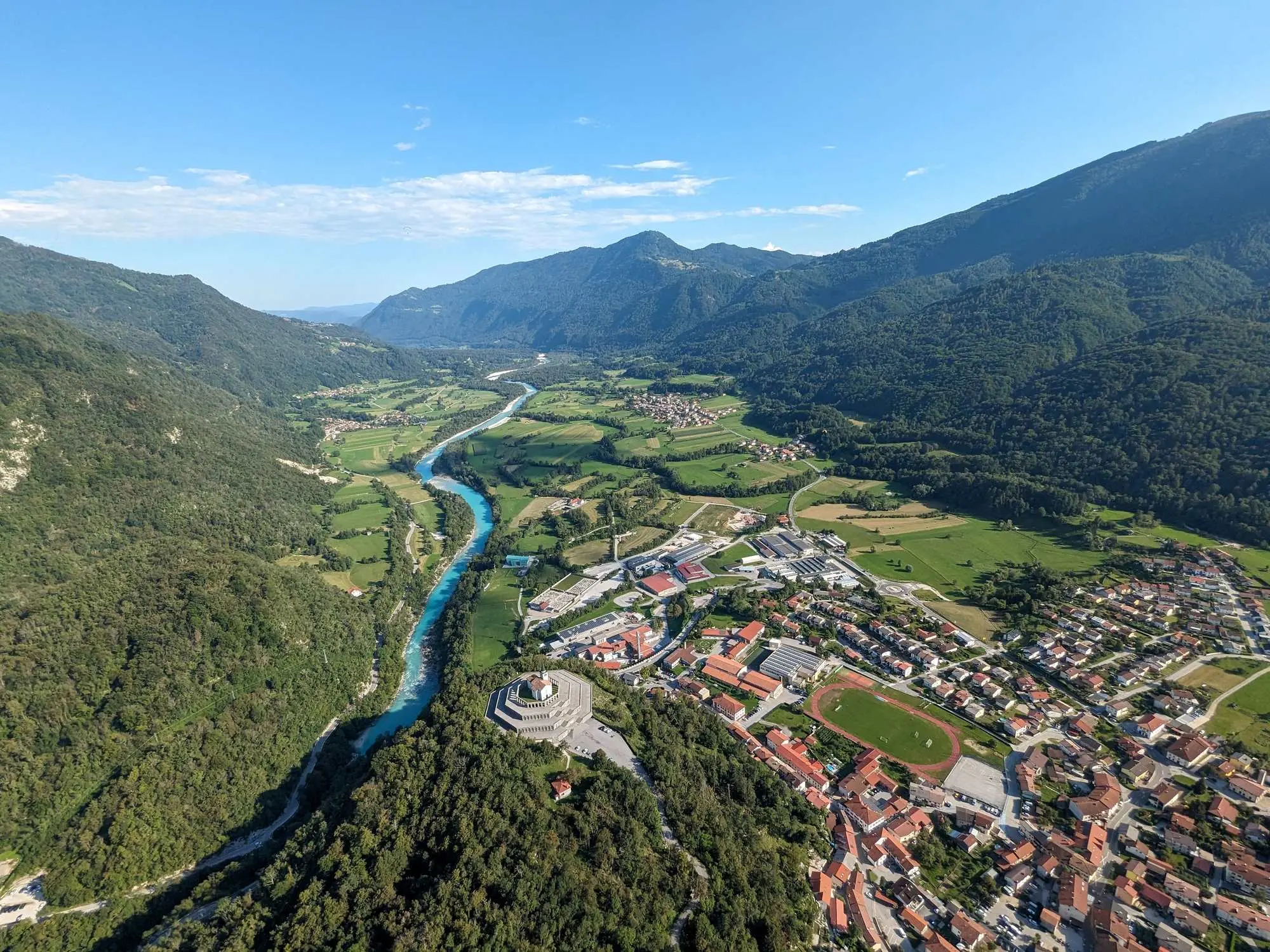
Italian ossuary, Church of St. Anthony of Padua, Photo: jaroslav.semerad Depositphotos
At the heart of this historical context lies a key event that greatly influenced the creation of the monument itself—the Battle of Kobarid, also known as the Battle of Caporetto. In October 1917, a joint German and Austro-Hungarian offensive broke through Italian lines and forced the entire Italian army into a chaotic retreat toward the Piave. It was one of the most spectacular defeats in Italian military history, with consequences that were not only military but also psychological and political.
Kobarid, once a symbol of military failure, was transformed in the years after the war into a site of a new narrative.
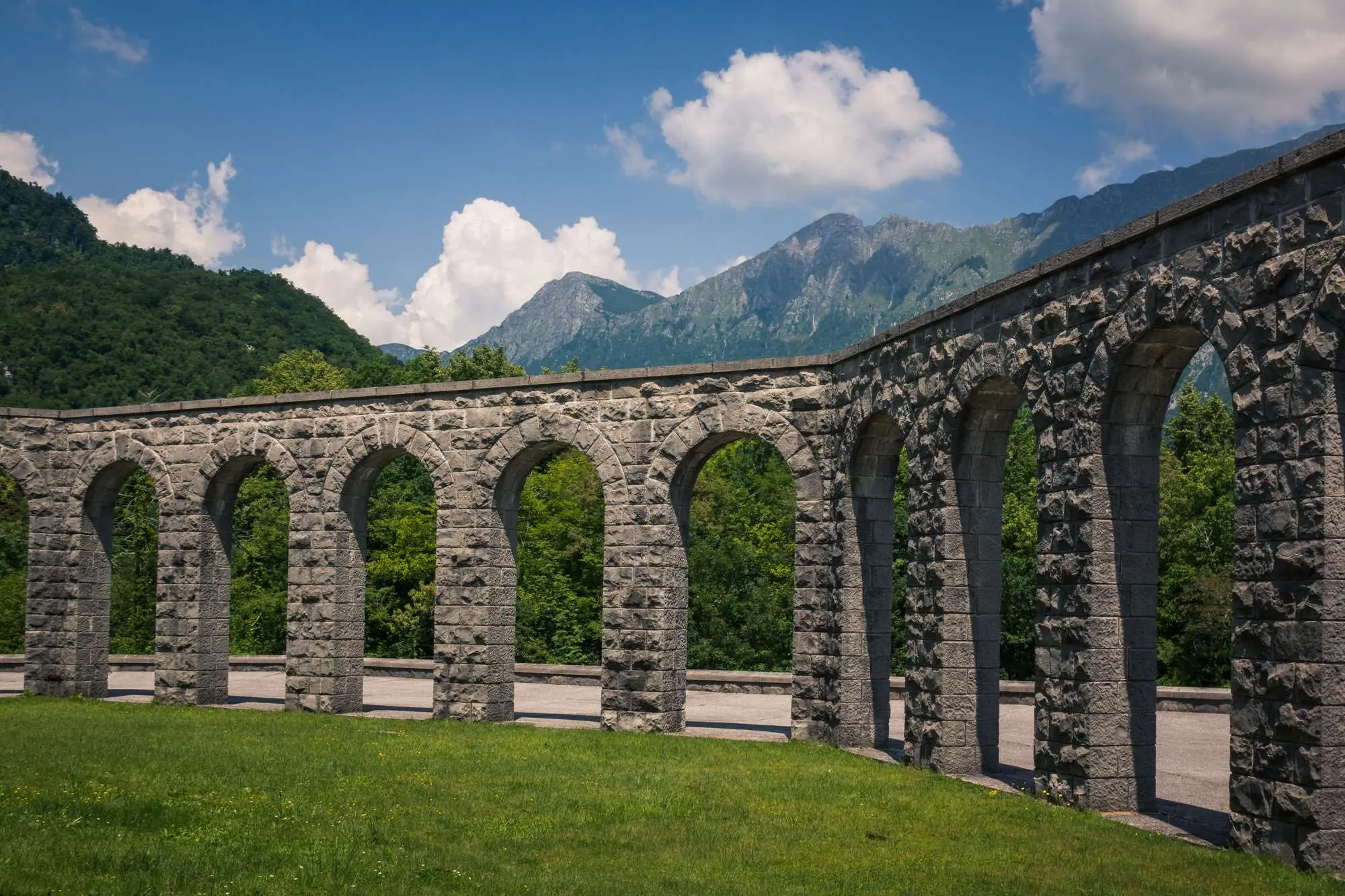 Italian ossuary, Church of St. Anthony of Padua, Photo: ArturBociarski Depositphotos
Italian ossuary, Church of St. Anthony of Padua, Photo: ArturBociarski Depositphotos
After the end of the First World War and the annexation of this region by the Kingdom of Italy, the Italian authorities decided to commemorate the site of their defeat in a way that would transform it into a place of pride. Between 1935 and 1938, the ossuary was constructed, a project designed by architect Giovanni Greppi and sculptor Giannino Castiglioni, a complex that houses the remains of 7,014 Italian soldiers who died on the Isonzo Front. Among them are nearly 1,700 unidentified soldiers.
The chosen location was no accident. This very hill above Kobarid offers complete visual command over the valley, symbolically reclaiming control over territory once lost, and is itself prominently visible from the town below. At the center of the circular complex stands the church, then reconstructed and integrated into the new design. Surrounding it are three concentric octagonal rings, each lined with niches bearing the names of the fallen and the word Presente—a phrase from fascist rhetoric, symbolically invoking the eternal presence of the dead in service of the nation.
The monument was officially inaugurated on September 20, 1938, in the presence of Benito Mussolini, as part of a broader campaign to monumentalize Italian presence along the country’s then eastern border. Credible sources suggest that the underground Slovenian resistance group TIGR had planned an assassination attempt on Mussolini during this visit, but the plan was never carried out. The inauguration ceremony of the ossuary was a carefully orchestrated act of political messaging, architecture, space, and history united in the service of an imperial narrative.
Yet despite the heavy symbolism, the ossuary survived regime changes and shifting borders. After the Second World War, the region became part of Yugoslavia, but the complex was preserved and remained under the care of the Italian state. Today, it is the only Italian ossuary outside of Italy that is still officially maintained. While it no longer serves as a symbol of imperial power, it remains a powerful reminder of the scale of wartime loss and of how states shape memory through the landscape.
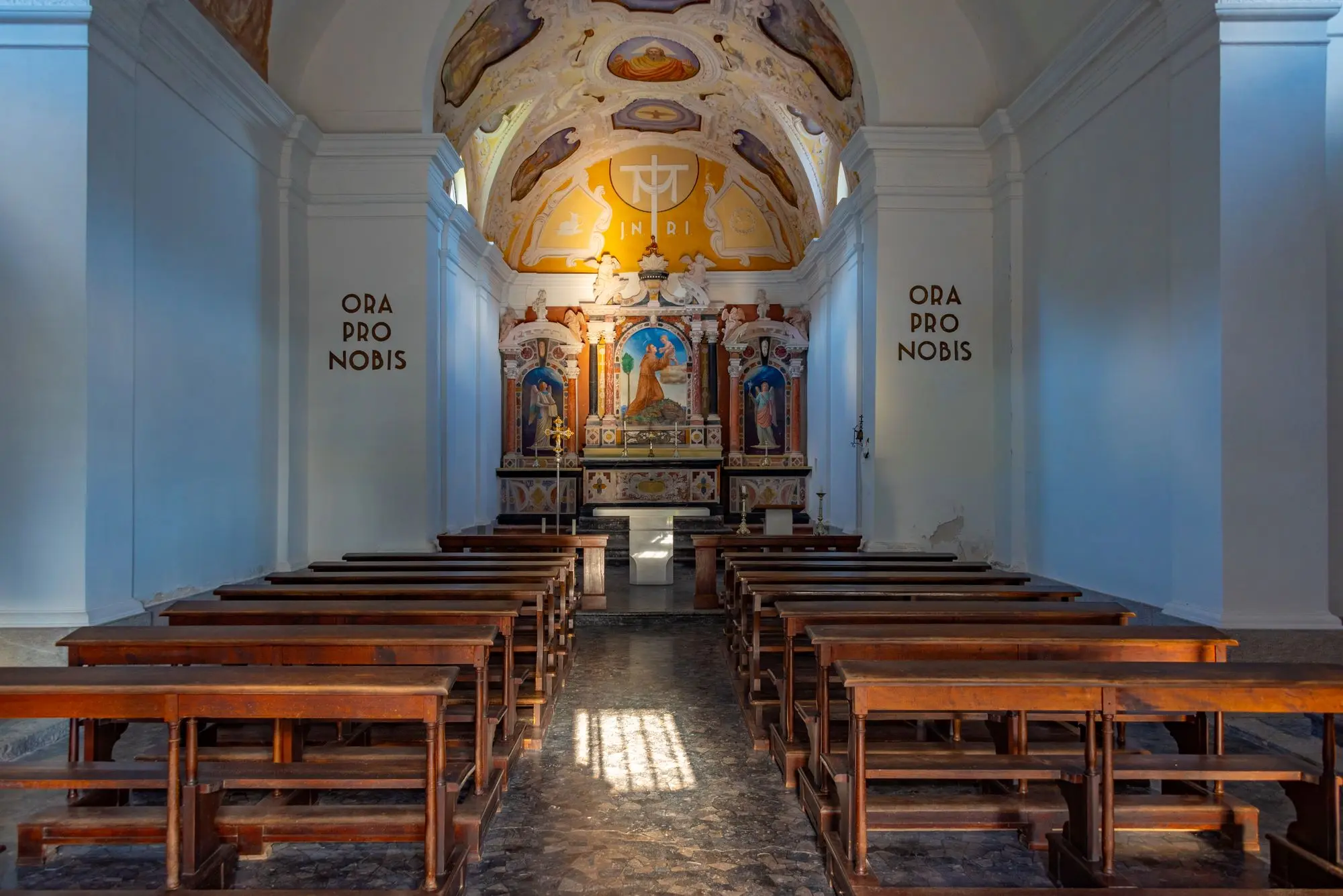
Italian ossuary, Church of St. Anthony of Padua, Photo: Dudlajzov Depositphotos
Today, the ossuary is open to the public and accessible throughout the year. A short serpentine road leads up from the town center, and the hilltop can also be reached on foot in about twenty minutes of easy walking. Entry is free, and the space is quietly maintained, no souvenirs, no guides, just silence, stone arches, and the view.
What visitors find there is not a typical war museum, nor a place of heroic glory, but a spatial lesson in history, politics, and collective memory. The ossuary and the church do not reveal everything at first glance; their message unfolds gradually, through atmosphere, symmetry, and the relationship to the surrounding landscape.
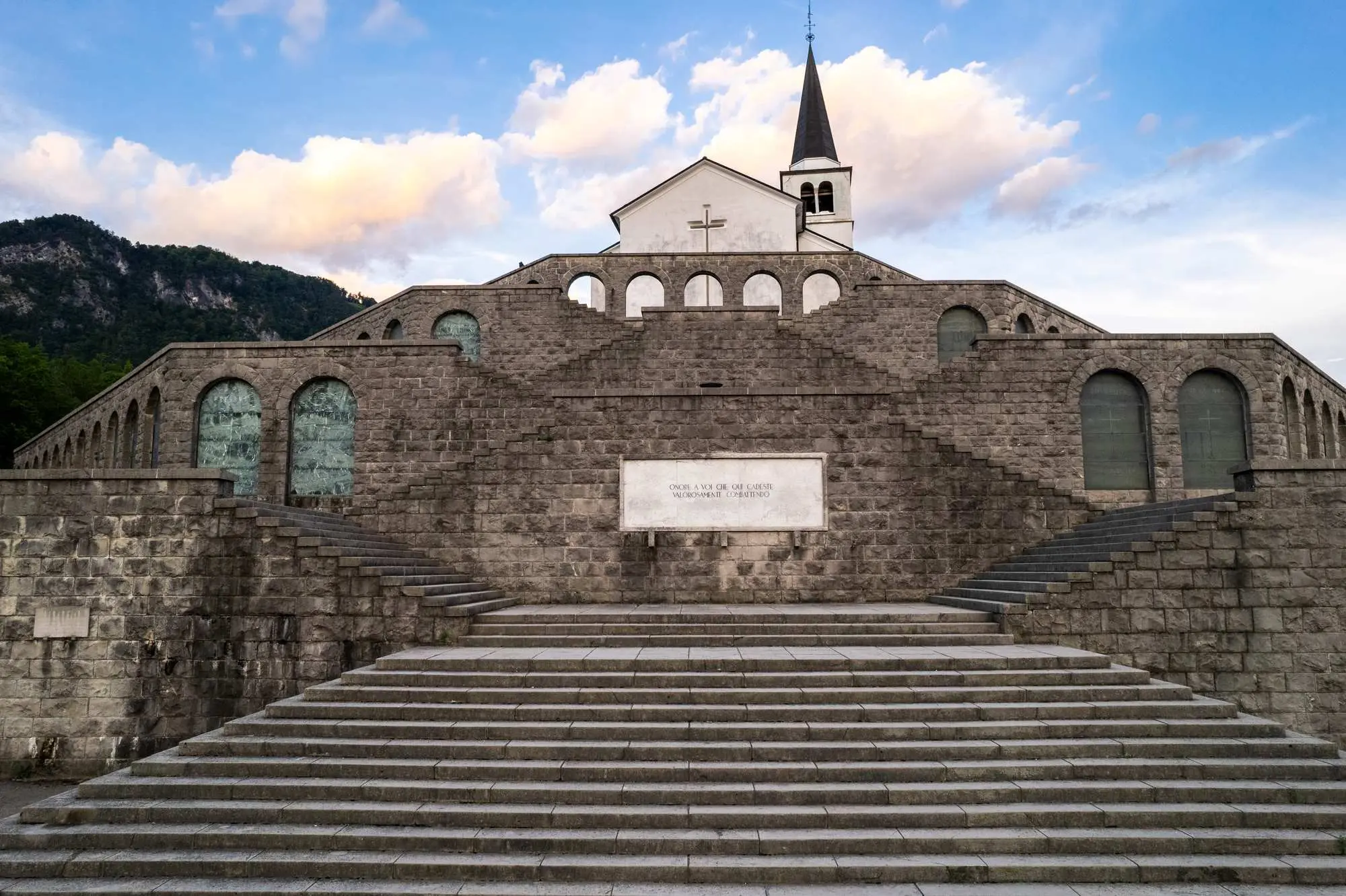
Italian ossuary, Church of St. Anthony of Padua, Photo: merc67 Depositphotos
For those seeking to understand the broader context of the region, this site complements the experience of visiting the Kobarid Museum, located in the town itself, where the stories etched into the stone outside are explored in depth within.
Visiting the ossuary does not feel like visiting a tourist attraction, but rather a place where the boundary between past and present has yet to fully fade. And precisely because of that, it is worth pausing, looking out over the valley, and without saying a word, understanding just how deeply a landscape can remember.

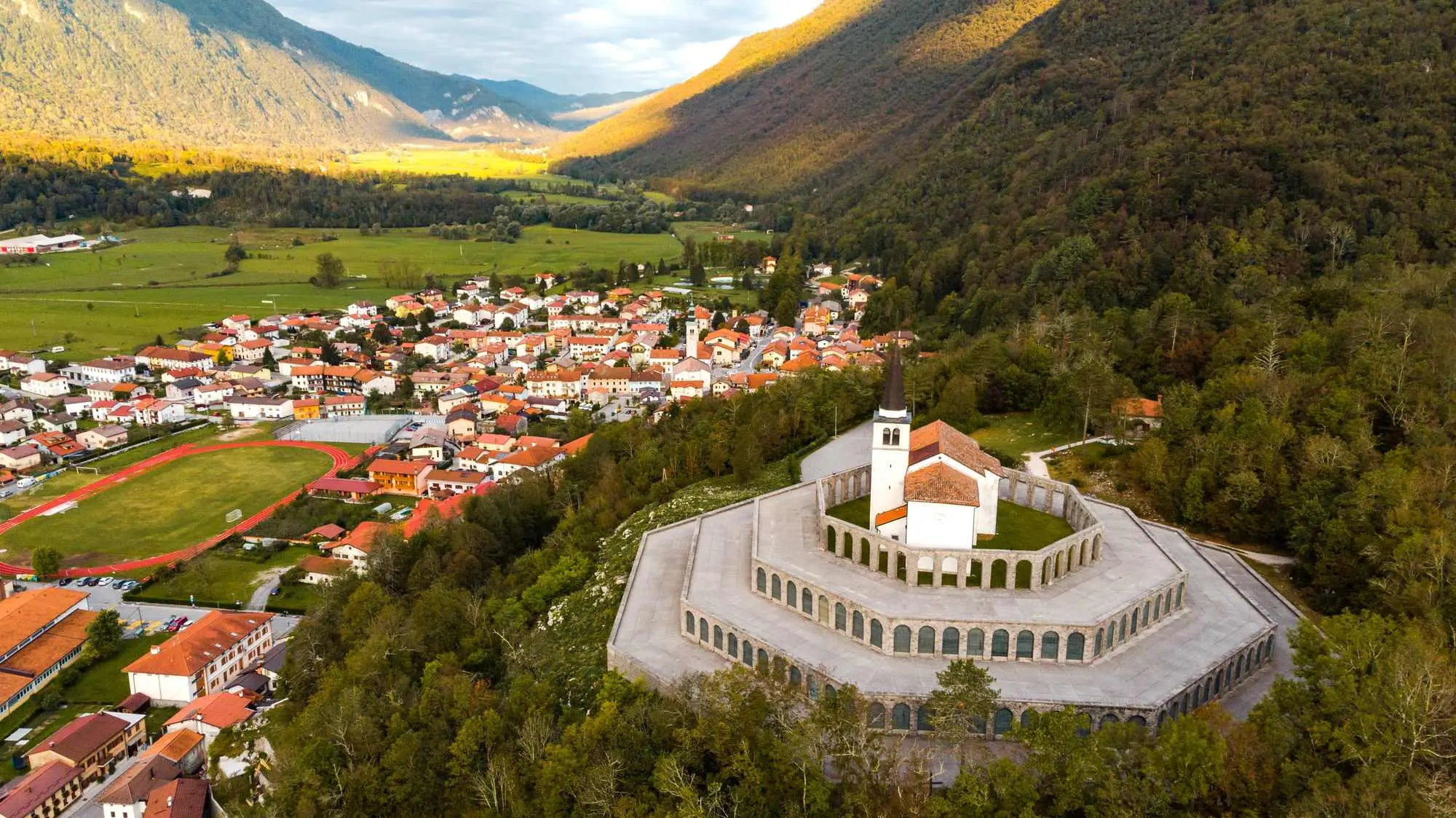
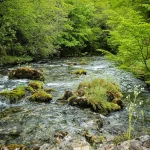
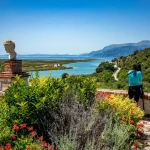
Leave a Reply